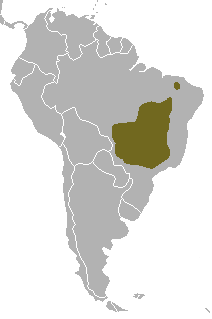Вы не зашли.
Объявление
"Давайте только проявлять больше внимания, терпимости и уважения к чужому мнению — вот и всё." — Gennadius.
— О размещении изображений на форуме, О рекламе на форуме
#1 06 April 2016 18:14:43
- Wolf
- Без пяти минут зоолог

- Зарегистрирован: 13 January 2009
- Сообщений: 2583
Бразильская лисица, или бразильский зорро
The hoary fox has a short muzzle, small teeth, a short coat, and slender limbs. The upper part of the body is grey, and the underside of the body is cream or fawn. The tail is black on the tip with a marked dark stripe along the upper surface, which in male animals, may extend all the way along the back to the nape of the neck. The ears and outside part of the legs are reddish or tawny, and the lower jaw is black. Some melanistic individuals have also been reported.
It is small for a fox, weighing only 3 to 4 kilograms (6.6 to 8.8 lb), with a head and body length of 58 to 72 centimetres (23 to 28 in), and a tail 25 to 36 centimetres (9.8 to 14.2 in). Together with its slender form, the small size of the hoary fox makes it an agile and fast-running animal, while its relatively weak teeth adapt it to feeding on invertebrates, rather than larger prey.
Hoary foxes are nocturnal, and largely solitary outside of the breeding season. It mainly eats insects, especially termites and dung beetles, but also may eat rodents, small birds, and fruit. Individuals have widely varying home ranges, depending on the local environment, but an average of 48 hectares (120 acres) has been reported from pastures in Mato Grosso.
The hoary fox is native to south-central Brazil, although there are some recorded sightings from the north of the country, and Pleistocene fossils are known from Argentina. Although they may be found in more marginal habitats, they usually live in the cerrado, between 90 and 1,100 metres (300 and 3,610 ft) elevation, where there are open woodlands, bushlands, and savannahs that are smooth or scattered with trees.
Females usually give birth to two to four pups in August to September, after a gestation period of around 50 days. The female prepares a den in which to give birth, sometimes using the burrows of other animals. Weaning occurs at around four months of age.



Отредактировано Wolf (06 April 2016 18:15:27)
Per aspera ad astra
Неактивен